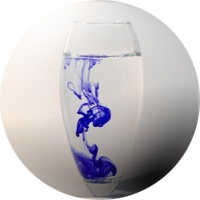
University of Buffalo scientists looking at new uses for methylene blue a common element in textile mill wastewater
YarnsandFibers News Bureau 2018-09-28 10:50:00 – BuffaloTimothy Cook, lead researcher and assistant professor of chemistry at the University of Buffalo said that, “Methylene blue is a widely used dye. It can be harmful to health, so it’s not something you want to dump into the environment without treating it,†said Timothy Cook, lead researcher and assistant professor of chemistry at the University of Buffalo. Also he added that, “There’s been a lot of work done on ways to sequester methylene blue out of water, but the problem with a lot of these methods is that they’re expensive and generate other kinds of waste products.â€
He said that, “We’d like to evaporate the wastewater into a more concentrated solution containing the methylene blue and the salts (salts are necessary for the battery to work and are already in textile wastewater), which can then be tested directly in a battery.â€
University scientists found that the dye, when dissolved in water, is good for storing and releasing energy, which makes the compound a promising candidate for large, rechargeable liquid-based batteries used by wind farms and solar homes to stockpile electricity, in a study that appeared in the journal ChemElectroChem. University of Buffalo scientists are looking at new uses for methylene blue which is a common ingredient in textile mill wastewater.
The research has shown methylene blue is good at important tasks associated with energy storage for redox flow batteries, while in it’s early stages.
The first battery the researchers made operated with near-perfect efficiency when it was charged and drained 50 times. When battery capacity for storing energy fell as molecules of methylene blue became trapped on a membrane critical to the device’s function, the scientists chose a new membrane material to solve that problem. The next step for the researchers is to obtain real wastewater from a textile mill that uses the dye.
Market Intelligence
Ask for free sample Report

experience
Customer Base
dedicated team
Countries Served Worldwide









